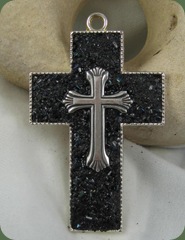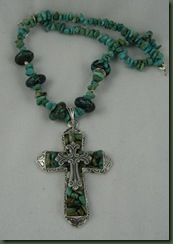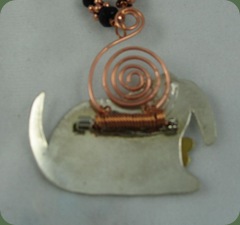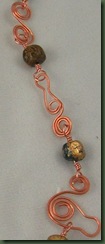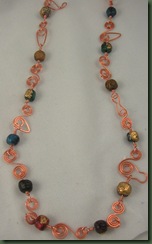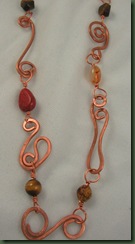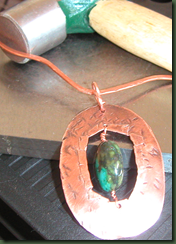Last night I picked up my largest hammer and smashed the beads!
It took a good deal of nerve and went against my usual routine of caring for the beads, but I did it anyway. It was the right thing to do.
I decided my relationship with those beads was an analogy to people relationships. Most of the time, you really nurture them, but occasionally, things just need a good whack, figuratively speaking. ( I don’t believe in violence.)
A customer mentioned that she was hunting a large black cross and, looking at all my earth colored offerings, said that she really liked burgundy, black and silver. Hmm . . . I guess my carnelian, turquoise and copper didn’t quite work. Figuring that if this person spoke up about wanting different colors there were probably others who were too timid to tell me, I launched a search to fill her desires.
I located a big silver plated cross at Paper Bear in San Marcos. It is the type with a reservoir for filling (a smaller one is pictured here). The problem became how to fill it. It tried various beads, chips, etc., but came up a loser. Finally, in desperation I saw my hammer and took action. First I tried to hammer black obsidian. I think the beads broke, but they went scurrying off the bench block so quickly, disappearing into the carpet, that I really can’t say how they turned out. Next, I tried hammering black onyx. Starting gently, not wanting to lose onyx like I did obsidian, I whacked the bead. Nothing . . . adding a bit more umph, I whacked again . . . nothing. I do believe that onyx is tougher than obsidian. 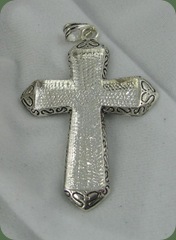
Now what? I hunted for black chips appropriate for smashing and finding none, I grabbed some Miyuki 4 mm cubes. I put them in a plastic sack and hammered. Those little guys are stronger than you think and punched holes in my sack before morphing into the small powder-like substance I wanted. Three punctured sacks later, I had the material for filling the cross. As the picture shows, the effect is rather unusual, but it certainly was a good deal of trouble. The cross will hang from a strand composed of sterling silver spacers, black onyx rounds and kiwi from Magpie Gemstones. I’m also thinking that the next time I decide to hammer beads, I’ll use the less expensive variety and a stronger sack.
Here’s the question. Is it a sin to hammer your beads? Someone or something worked hard to get them into their purchased shape and with a wham of the hammer, it can be gone.
I think it’s OK. I have a feeling there will be many sinners in bead heaven. Perhaps some will have done far worse things than hammering the beads. Here’s my philosophy . . . it’s better to take your frustrations out on your beads than on your family and friends. So, go ahead and WHACK!
